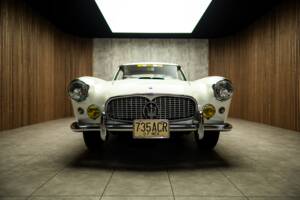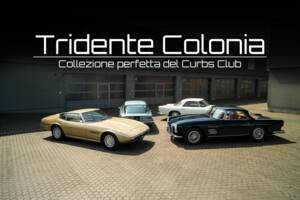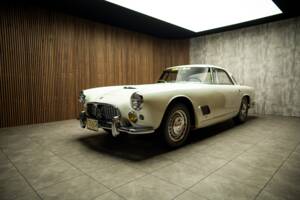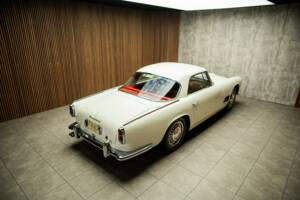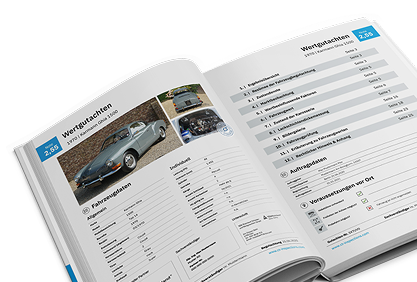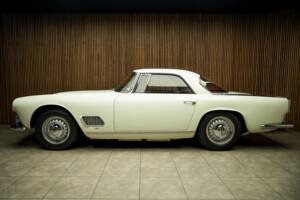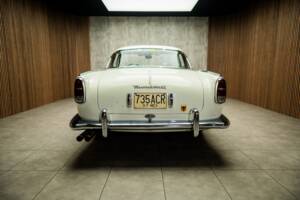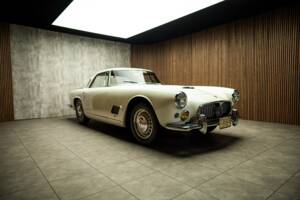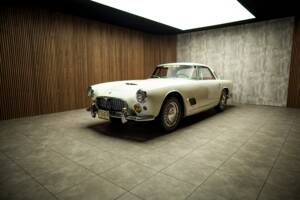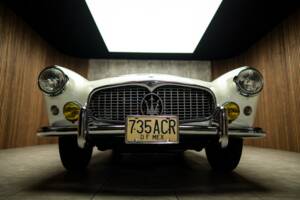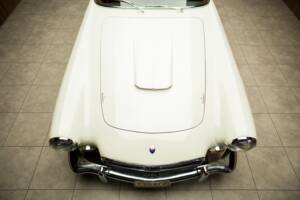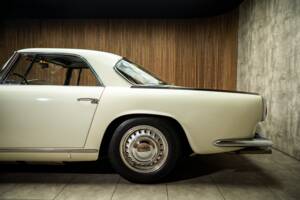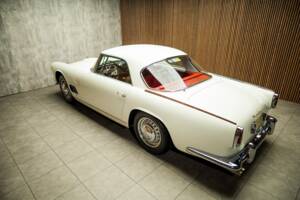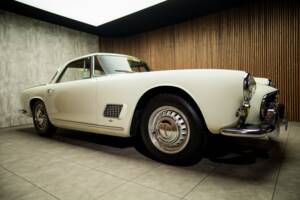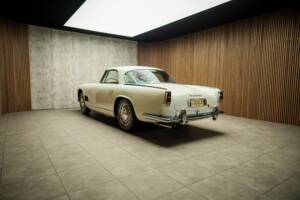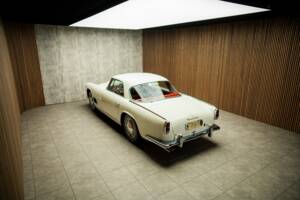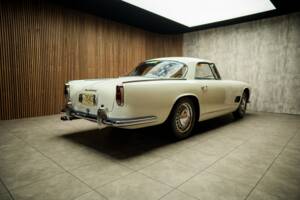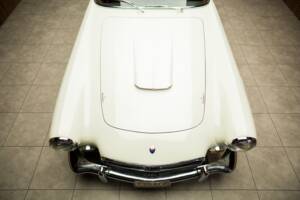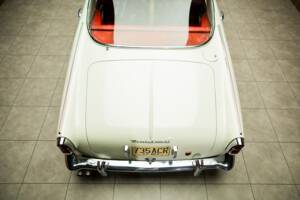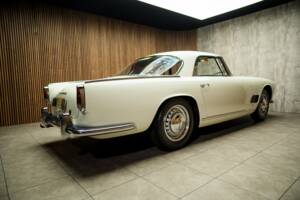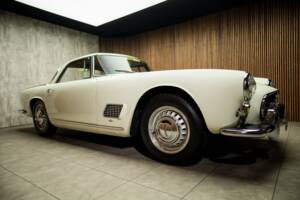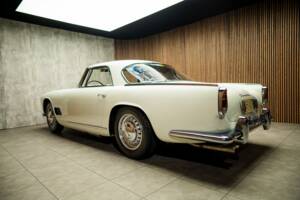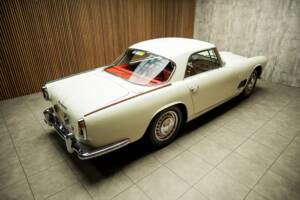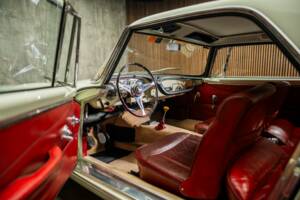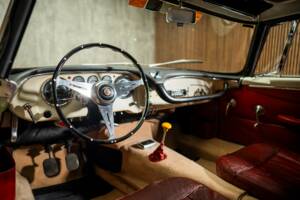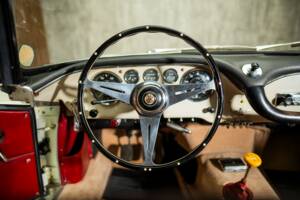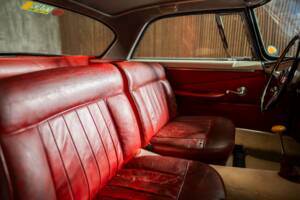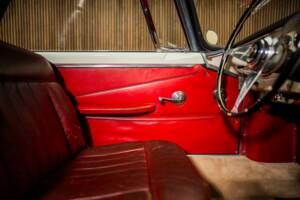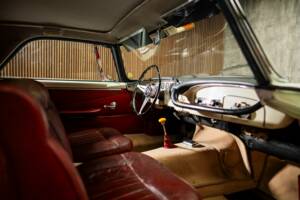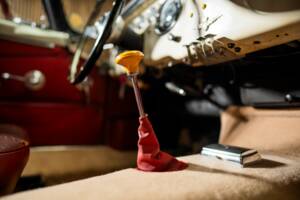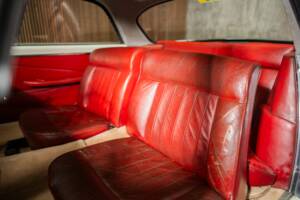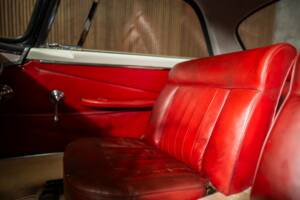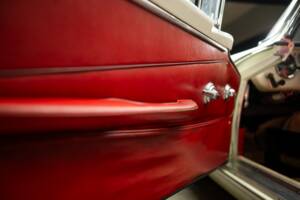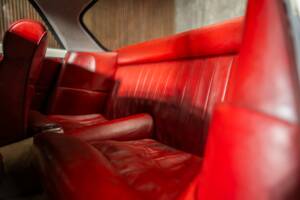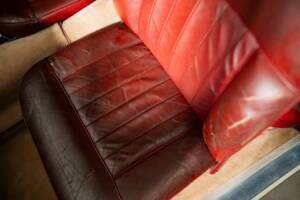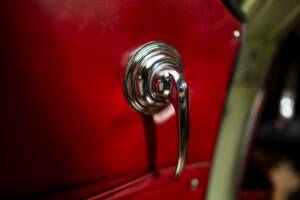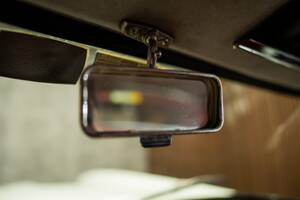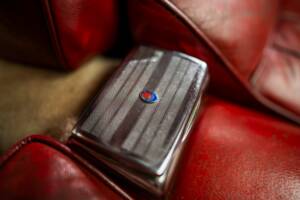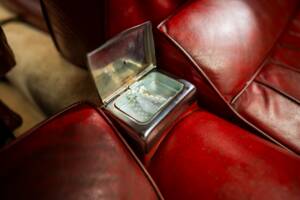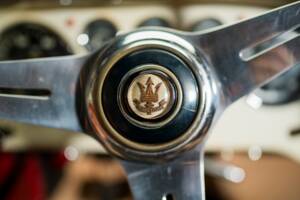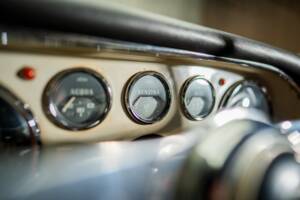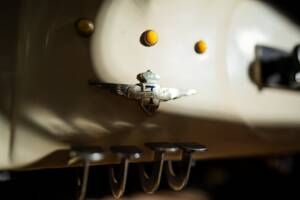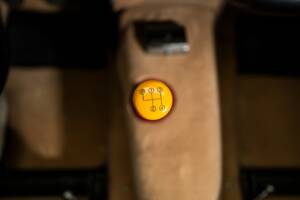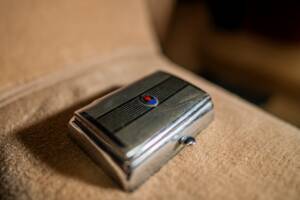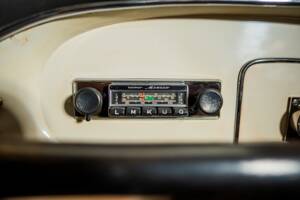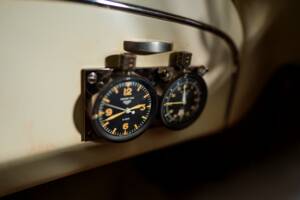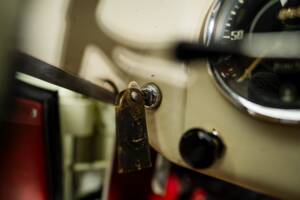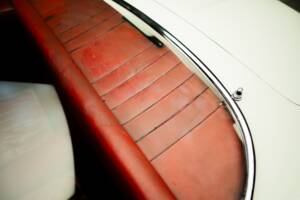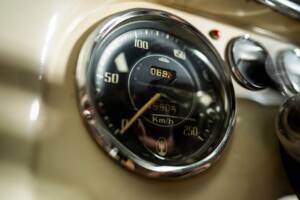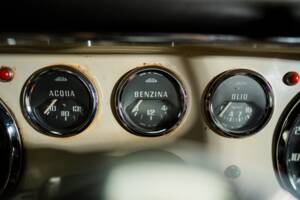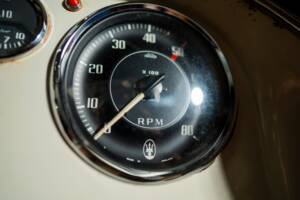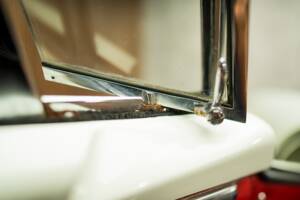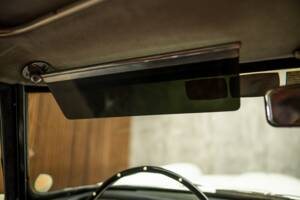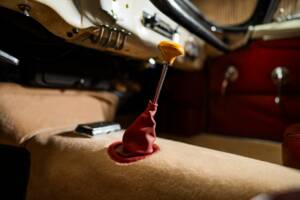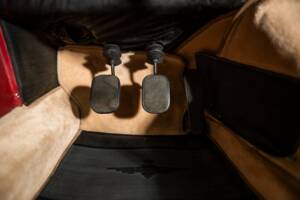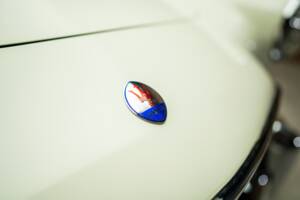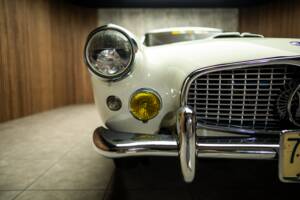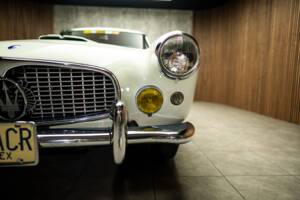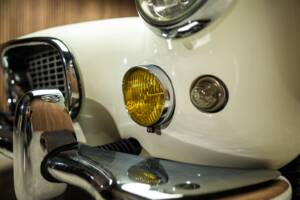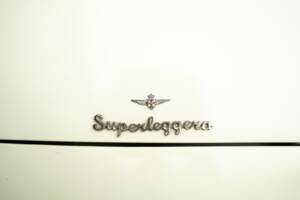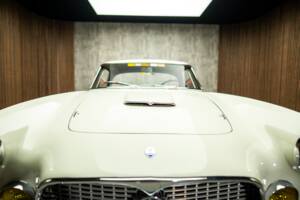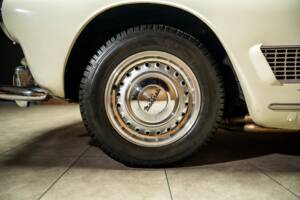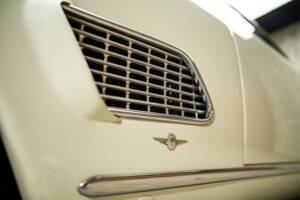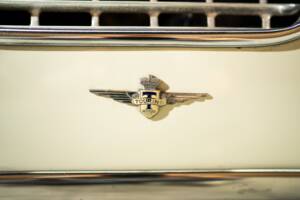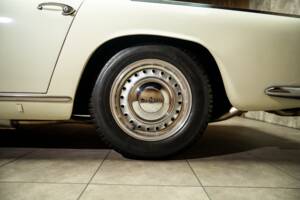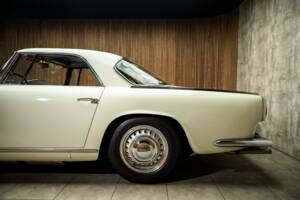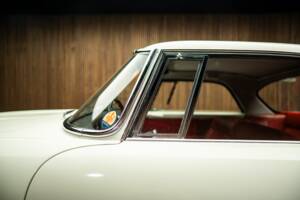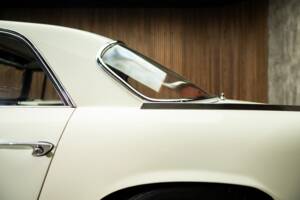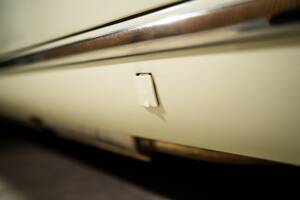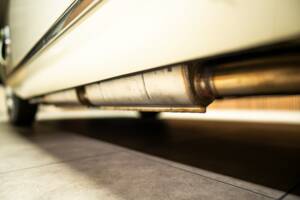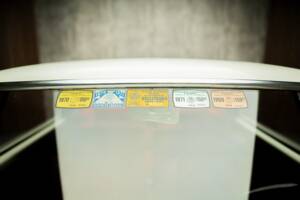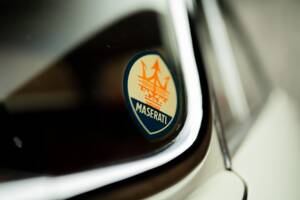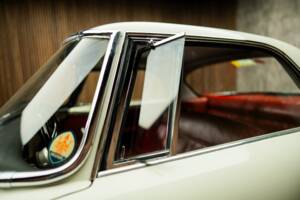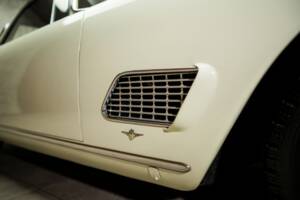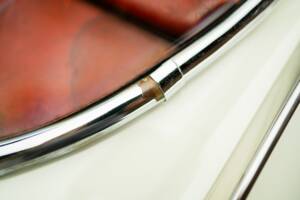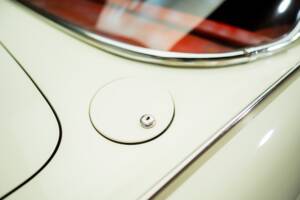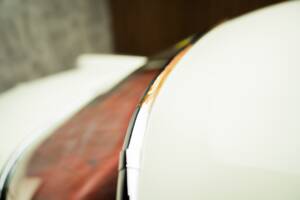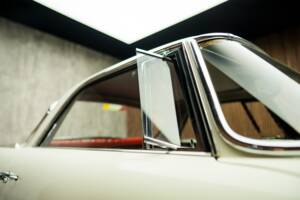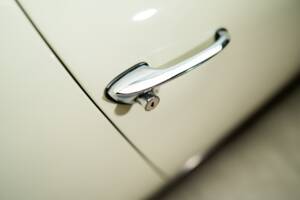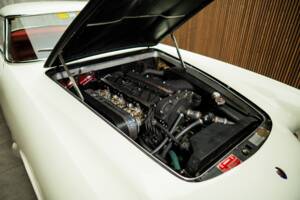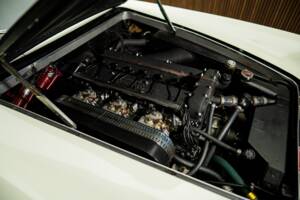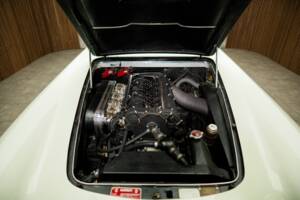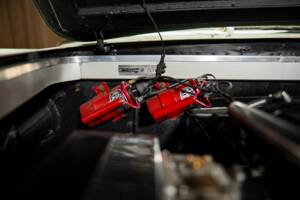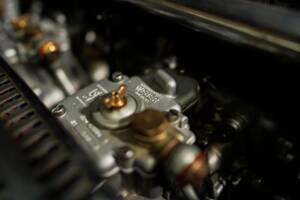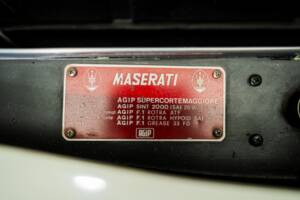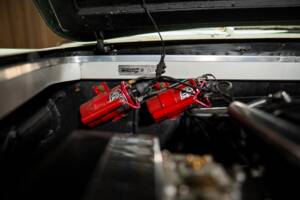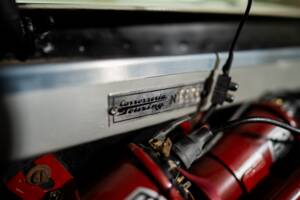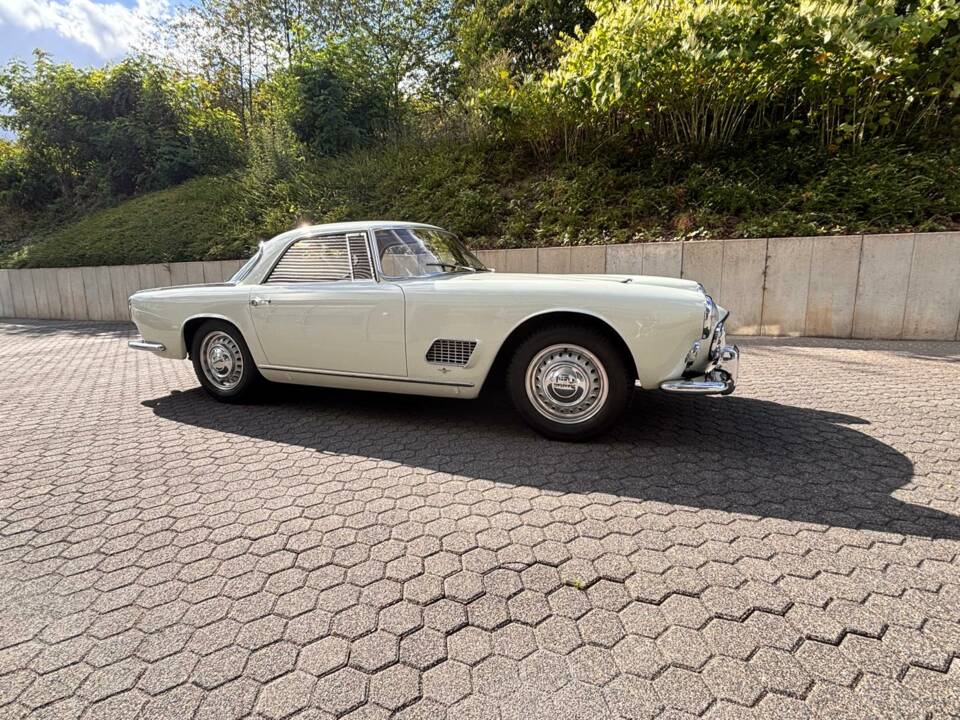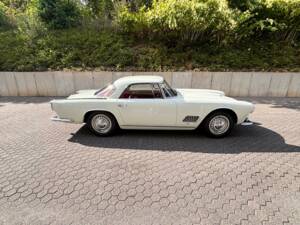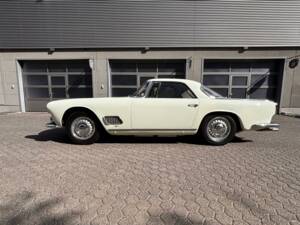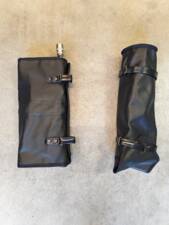1959 | Maserati 3500 GT Touring
in original, unrestored and excellent condition!!!!
in original, unrestored and excellent condition!!!!
Tutti i servizi per questo veicolo
Descrizione
The Origin of the Gran Turismo
But let's first look back: Maserati, founded in Bologna in 1914, was sold by industrialist Adolfo Orsi in 1937. Orsi relocated the company to Modena and, although he achieved racing success with the Maserati, was not doing well financially until the early 1960s. With the A6 and all its many derivatives, produced from 1947 onward, the Italians also offered a road-going model. However, it wasn't until a white Maserati 3500 G.T. was presented at the 27th Geneva Motor Show in March 1957, along with the new Mercedes 300 SL and a Pininfarina-designed Ferrari 250 GT Spider, that sales figures developed in a direction that made series production and financial success possible.
.
In the mid-1950s, a new segment of sports car buyers emerged. Entrepreneurs, stars, and other successful individuals were thirsting for fast, luxurious sports cars; they didn't want to race, but rather travel fast on the increasingly well-developed road network.
Maserati, or rather engineer Giulio Alfieri, quickly recognized this trend and built an elegant two-plus-two-seater sports car that combined existing technology with new ideas. And new ideas were needed at a time when Maserati was suffering from severe financial problems.
Naturally, Maserati had looked to its neighbor Maranello, where the Ferrari 250 GT Gran Turismo was a smash hit. They also had a decent engine in Modena; the 3.5-liter inline six-cylinder from the 350S racing car could be adapted relatively easily. The approximately 220-240 hp in the first versions, which were supplied with fuel via three twin Weber carburetors, ensured good performance, even though the Maserati, at 1.4 tons, was no lightweight. Initially, the transmission shifted via four gears, but from 1961, a five-speed transmission from ZF was introduced.
The 3500 G.T. was mounted on a classic tubular frame. The front wheels were individually suspended on double wishbones and sprung via coil springs. The rear axle was a solid axle, which Maserati purchased from Salisbury Wheels in England – this was the biggest criticism of the 3500 GT, along with the initially used Girling drum brakes. From 1960, disc brakes were installed at the front. Compared to theFerrari 250 GT Coupé, the Maserati was designed for more comfort. However, the design was universally praised. At the 1957 Geneva Motor Show, two body styles were available: one from Allemano and a second from Touring, which was then adopted for series production. Touring was also supposed to build the convertible, but the design seemed relatively clumsy, so the contract went to Vignale, where Giovanni Michelotti had designed a handsome model with an elegant hip sweep.
By 1964, including the 3500 GTI with port fuel injection, built from 1962 onwards, 1,972 examples with the Touring coupé body had been built. In addition, there were 245 Vignale Spiders and a few unique pieces from other Italian master craftsmen.
Racing technology for the road
The engine, however, still traced its origins back to a racing engine. Stirling Moss had already competed in the Mille Miglia with the three-and-a-half-liter six-cylinder in 1956 and won the Formula 1 race with it in 1957. Two overhead camshafts and dual ignition were therefore a given, as were three dual carburetors. With reduced peak power and engine speed, and a timing chain instead of spur gears, the light-alloy engine still produced an impressive 220 hp at 5,500 rpm. In the contemporary competitive world of super sports cars, it thus positioned itself between the Mercedes-Benz 300 SL (215 hp) and the Ferrari 250 GT (240 hp). With a displacement of 3,485 cc, the six-cylinder was also the largest Italian production engine of its time.
While the engine was developed by chief designer Giulio Alfieri, the remaining technical components were purchased from external companies. The four-speed transmission (five-speed from 1961) and the worm-gear steering system came from ZF, the brakes from Gerling, and the differential from Salisbury. This ensured that all components functioned smoothly even at a top speed of up to 230 km/h, and valuable time was not lost testing in-house developments. The technical conglomerate was combined in a tubular space frame with two sturdy longitudinal members and extra-strong sills. This made the 3500 G.T., unlike a monocoque construction, ideal for the construction of special bodies.
What's so special about this vehicle?
The 3500 G.T. is now part of the prestigious Maserati collection "Tridente Colonia - Collezione perfetta del Curbs Club."
This collection is also for sale as a package and consists of the following vehicles:
Maserati Gibli 4700 (restored to perfection)
Maserati Mistral 3700 GTI 2-seater (pre-production, restored to perfection)
Maserati 3500 G.T. Dark Blue (pre-production, restored to perfection)
Maserati 3500 G.T. White (unrestored, fantastic, and in original condition)
This 3500 G.T. was built in late 1959 and delivered in November 1959 via the Mexican Maserati dealer Automotriz O'Farill in Mexico City. It most likely belonged to Adolfo López Mateos, the President of Mexico.
The exterior color was "Bianco Neve" with the code SAVIDIN 4507. The leather was from Connolly, was Rosso, and had the number PAC.1543. Since it wasn't a standard color, it was probably a special order from the first owner.
The second owner, since 1966, was Roberto Sarquis, CEO of a very large company in Mexico, who owned 35 vehicles. During his tenure, the car was repainted once in its original color. In 1972, at 47,961 km, the engine suffered a cylinder head gasket failure, and since then, the Maserati has been unused and stored. He passed away in December 2001, and his widow sold the Maserati to a good friend of the family.
The third owner, Mr. Sam B., also Mexican, came from Texas in the USA and is a collector of various Maseratis and Ferraris. He commissioned a renowned Maserati workshop, Ferrari of Houston, to repair the cylinder head gasket in 2002. The engine was disassembled but never reassembled.
The fourth owner was Frank G. Mandarano, founder of MIE, California, USA, who purchased the vehicle on December 16, 2011.
The fifth owner, since March 2015, is a prominent collector from Germany.
The history is known in detail since 1966. It is a very authentic vehicle, still has its original interior, is rust-free, and is considered to be in very good condition.
Frank G. Mandarano bought the car in late 2011. When he listed it for sale later in 2013, he wrote: "During the months of January to April 2012 and November to April 2013, the car underwent a fully documented mechanical overhaul, documented with hundreds of photos. The work was performed in Palm Desert and included machining the cylinder head and crankshaft, installing new rear brake cylinders, new front caliper pistons and seals, and a rebuilt brake booster. The clutch hydraulics were replaced, including new pedal boots. New clutch and master cylinders were installed. The gas tank was removed, cleaned, and reinstalled with new fuel lines. The freshly rebuilt radiator was installed, along with all new water hoses, the water pump, and the OEM clamps. The original 4-speed transmission—which came in pieces—was air-freighted to Modena, Italy, where it was rebuilt by a ZF transmission expert. overhauled and reinstalled with a new drivetrain. The differential received a new gasket and seal, the Weber carburettors were overhauled along with new, precisely fitted, oversized throttle shafts. A new distributor cap and rotor were fitted along with a new water pump and scavenging oil pump. Many details were attended to, and a high-quality electric cooling fan, controlled by an on/off switch under the dashboard, ensures that overheating will never be a problem again. In January 2013, new, correct Wilton wool carpets were cut and fitted along with an original cloth edging imported from the UK. Each piece of carpet was carefully cut to match the original. The original carpets were retained and will accompany the car. Four new Pirelli 185 VR Cinturatos were fitted and balanced on the original Borrani alloy wheels. Included are factory documents from May and June 1968 and August 1969, further establishing the correct ownership history. Please note that the rear window sticker from 1991 matches the license plate. The vehicle was last registered for road use in 2001.
This 3500 G.T. TODAY
The car is largely completely original. It boasts a charming patina, and the mileage of 49,902 km is both credible and understandable.
Finding a Maserati in this pristine condition is virtually impossible. We believe this is probably the best-preserved Maserati 3500 G.T. A unique piece of originality is the only one; the car has incredible charisma and authenticity. Even a top-notch restoration cannot recreate this charisma.
The dashboard is equipped with five Jaeger instruments, consisting of displays for speed, rpm, fuel level, oil pressure, and water temperature. A period Becker Mexico radio and a mechanical TAG Heuer Tripmaster complete the instrument panel. Beautiful chrome sun visors and tinted artificial glass protect you from the glare of the sun. The headliner is lined with beige wool fabric.
The engine is matching numbers, as are all the mechanical parts on the vehicle.
It already has a front disc brake and factory-fitted alloy wheels. The exhaust system was renewed at MIE and is made of stainless steel.
The chrome is original and beautifully preserved.
The leather is still original and soft, with a beautiful patina. The carpet has been replaced and is 100% authentic. The original materials were used. The Wilton wool carpet and edging were also imported from England.
The Weber carburetor system is also original, as are all the glass and the lights.
A service will be performed before delivery.
This car is a rare collector's item and cannot be compared to the average 3500 G.T. on the market. This 3500 G.T. is part of a fantastic collection with other Maseratis, all in comparable condition. Arwed Lange, our contact person and responsible for sales, will be happy to advise you expertly. He will be happy to provide you with all the relevant information about these vehicles and invites you to our showroom in Cologne.
A video by Petrolicios with the last owner from the USA was shot in 2014 and reveals a lot about the Maserati. You can watch it here:
https://www.youtube.com/watch?v=tyueWPyQmMc
We hope we have piqued your interest in this excellent opportunity. Thank you for your interest, and see you soon in Cologne.
Dettagli del veicolo
Dati veicolo
- Marca
- Maserati
- Serie di modelli
- 3500 GT
- Modello
- 3500 GT Touring
- Serie di fabbricazione
- Tipo AM101
- Prima immatricolazione
- 11/1959
- Anno di fabbricazione
- 1959
- Chilometraggio
- 49.902 km
- Numero di telaio
- Non fornito
- Numero del motore
- Non fornito
- Numero del cambio
- Non fornito
- Matching numbers
- SÌ
- Numero di proprietari
- 5
Dettagli tecnici
- Tipo carrozzeria
- Coupe
- Potenza (kW/CV)
- 162/220
- Cilindrata (cm³)
- 3485
- Cilindri
- 6
- Porte
- Non fornito
- Posizione volante
- Sinistra
- Cambio
- Manuale
- Marce
- Non fornito
- Trazione
- Posteriore
- Freno anteriore
- Non fornito
- Freno posteriore
- Non fornito
- Carburante
- Benzina
Configurazione individuale
- Colore carrozzeria
- Bianco
- Nome colore produttore
- SAVIDIN 4507 Bianco Neve
- Colore interni
- Rosso
- Materiale interni
- Pelle
Condizione, registrazione e documentazione
- Condizioni
- Autentico
- Ha un rapporto
- Condizione
- Rapporto di ispezione dell'ordine
- Revisione
- Revisione fino a
- 09/2027
- Targa storica
- Immatricolato
- Pronta a partire
- Senza incidenti
